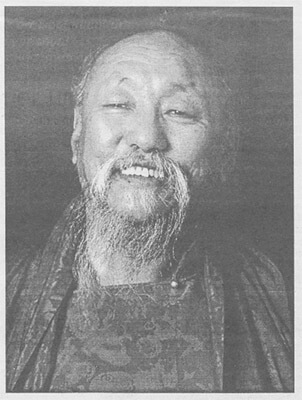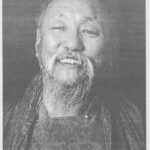| The following article is from the Winter, 2003 issue of the Snow Lion Newsletter and is for historical reference only. You can see this in context of the original newsletter here. |

During the early morning hours of Sunday, November 17, His Eminence Chagdud Tulku Rinpoche passed into parinirvana at Khadro Ling, his main center in Brazil.
Recognized as the tulku of Chagdud Tenpai Gyaltsen at the age of three, Rinpoche entered his first three-year retreat at the age of eleven, then undertook a second three-year retreat in his twenties. He was the prophesied custodian (choodak) of Terton Padgyal Lingpa's teachings, and throughout his life received transmissions from lamas of all the Buddhist traditions of Tibet, particularly those of the Nyingma school.
After leaving Tibet in 1959, Rinpoche lived in various Tibetan refugee settlements as an organizer and spiritual leader. In 1977, he attended the series of empowerments given in Nepal by Kyabje Ducljom Rinpoche. During the months that followed, a number of Western students gravitated toward him, attracted by his accessibility, humor, warmth, and splendid chanting. In 1979, he immigrated to the United States, eventually becoming a citizen.
He trained his students in the sacred arts of sculpture and painting, as well as ritual dance, chanting, and music. He himself delighted in creative chaos clouds of cement dust, splashes of brilliant paints, arrays of exotic dharma substances, and the cacophony of construction noises. He liked to work in a long denim half-chuba or in a pink tunic he had fashioned from a tablecloth, but because he was apt to pick up an art project at any time, his formal clothes were sometimes flecked with paint.
Rinpoche gave many indications that he knew the end of his life was approaching, but only after his death did it become clear from conversations people remembered having had with him that he negotiated this transition with prescience. In August, he canceled an autumn teaching tour of the United States, choosing instead to do retreat in Brazil. In the last week of his life, he completed the retreat, worked with a student artist to complete a statue of Amitabha, talked with many of his students, and led a training in p'howa (transference of consciousness at the moment of death) for more than two hundred people. During the training, it became apparent that his longstanding heart condition had become acute, and an appointment was made with his cardiologist in Sao Paulo, an hour-and-a-half journey by air. However, he insisted on delaying the trip for a day so that he could continue the teachings, which he did until 9:30 on the night before he passed away. He was not feeling very well but was warm and humorous after the teachings, staying up until midnight.

Chagdud Rinpoche taught people all over I the world how to train their minds and prepare for death. His own mastery of this transition remains one I of his most inspiring teachings.
At about 4:15 a.m., Brazilian daylight time, he suffered massive heart failure while sitting up in bed. He remained in meditation for five days, during which his body maintained a natural posture and showed no signs of deteriorating. Many could feel his presence as a wealth of indescribable blessings.
On the morning of the sixth day, just as Jigme Rinpoche and several other lamas were about to perform a ceremony to request that he interrupt his meditation, Rinpoche's consciousness finally left his body. Although this seemed regrettable, it was then possible to handle the body according to Brazilian regulations.
Chagdud Rinpoche taught people all over the world how to train their minds and prepare for death. His own mastery of this transition remains one of his most inspiring teachings.

